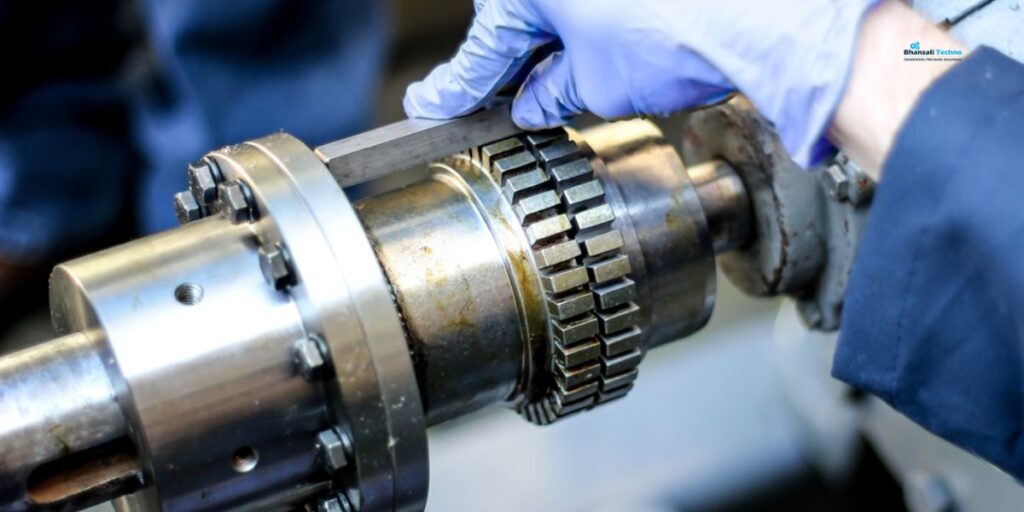A Comprehensive Guide To Coupling Types And Their Benefits
Small yet powerful mechanical devices couplings connect and transmit power (or torque) from one shaft to another. It is not just connecting shafts and transmitting power; couplings are equally responsible for maintaining motion, absorbing shocks, and avoiding misalignment and the dislocation of rotating shafts. Not just one; many types of coupling are introduced to mechanical systems to help reduce wear and tear, enhance the system’s overall performance, and increase longevity and reliability.
Industries manufacture different types of coupling depending on the type of equipment and industrial requirements. Some machines require muff couplings, whereas others need flexible or universal ones. Couplings are commonly used in devices like vertical pumps, motors and generators, automobiles, conveyors, industrial equipment, and compressors. Keep reading if you want to know how many types of coupling are used in medium to heavy-load machines in detail.
7 Different Types Of Couplings And Their Advantages
From meeting specific requirements to ensuring more flexibility and stability of systems, all the types of coupling you come across have different functions and purposes. Some couplings are manufactured with simple designs and lead to simple functions; however, in more complex systems, such as heavy industrial machinery, the type and functions of couplings are a bit different.
Here are seven different types of coupling that are commonly used in automotive, aerospace, electronic, and other similar industries.
1. Muff or Sleeve Coupling
Sleeve or muff couplings are the simplest types of coupling, which include a cylindrical hollow part called the sleeve or muff. These couplings are designed according to the diameter of the shaft and are fitted with drive and driver shafts on each end of the sleeve.
Muff couplings are secured with sleeve holes that ensure they do not move in a longitudinal direction after the bolts are inserted. The key and the keyway are designed to keep the coupling in place and prevent it from slipping. Muff couplings are ideal for mechanical systems with light or medium load capacity and duty.
Benefits Of Using Sleeve Coupling
- It has the simplest design and function.
- It is cheaper compared to other couplings.
- Maximizes system performance.
- It can be used with slightly misaligned shafts.
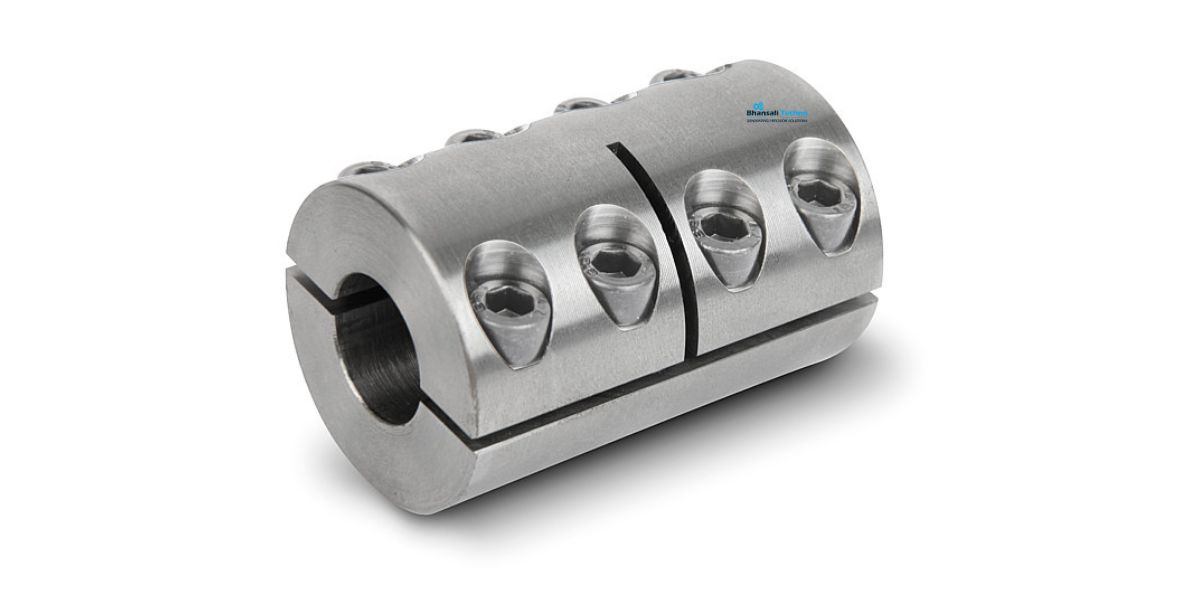
2. Flexible Coupling
These couplings are most suitable in mechanical systems where the shaft position changes from one machine to another, and minor shaft misalignment needs to be allowed. Flexible couplings are one of the most common types of pump couplings that transmit rotary power, connect two shafts, and help accommodate misalignment in shafts.
The structure of flexible couplings is similar to a flanged coupling, including a rubber bushing, and secured with bolts and nuts. The rubber bushing used in these couplings provides the strength for absorbing vibrations and shocks and is easily accommodated with misaligned shafts. They are most suitable for medium-duty machines.
Benefits Of Using Flexible Coupling
- It can reduce wear and tear, stress, and noise from systems.
- Absorbs shock and can compensate for thermal contraction and expansion.
- Offer a long service life and maintain performance stability.

3. Flanged Coupling
As the name suggests, flanged couplings have two flangs that come together to form a firm fit. These couplings also have threaded holes, nuts, and bolts to transmit equal force. Flanged couplings are efficient types of fluid coupling that avoid leakage, prevent slippage, and are most suitable for medium to heavy-duty applications.
Benefits Of Using Flanged Coupling
- Easy to install and maintain.
- Can work well with heavy-load, high-speed machines.
- Maintains equal output and input rotation.
- It is a much more cost-effective option than other couplings.
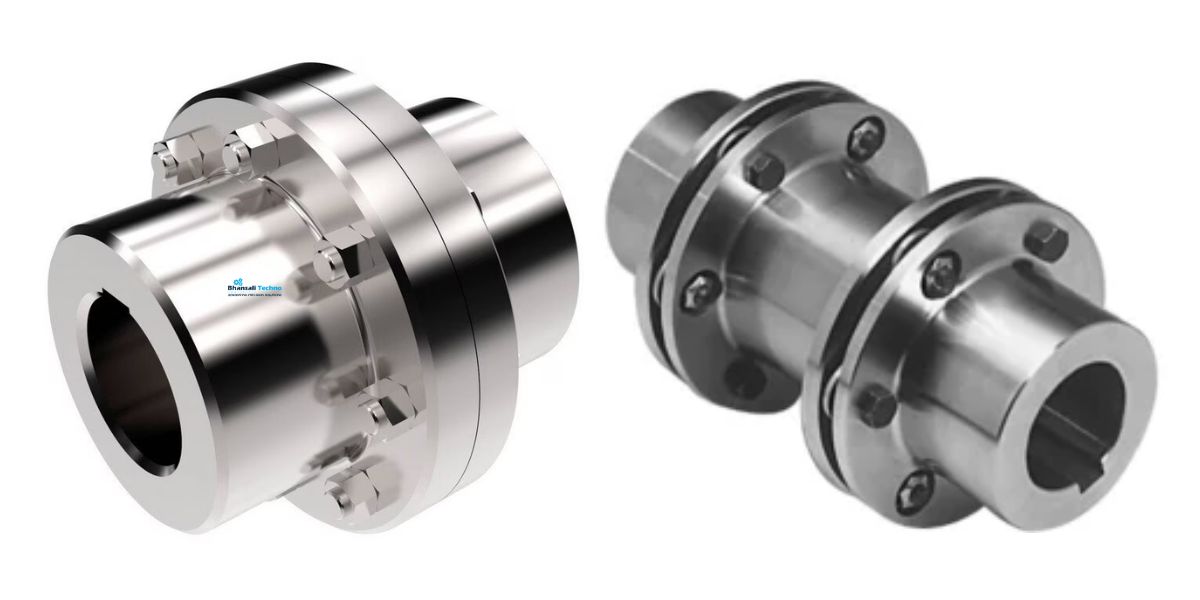
4. Fluid Coupling
These couplings are fundamental in controlling slip between output and input rotations and maintaining smooth movements. Fluid couplings are powerful hydrodynamic devices most common among pump shaft manufacturers that are designed for equal turbine and power transmission. Fluid or hydraulic couplings are most popular in heavy machinery like pumps and conveyors.
Benefits Of Using Fluid Coupling
- Ensures smooth power transmission in all conditions.
- No worries relating to noises and vibrations.
- It helps in increasing the machine’s efficiency.
- It is ideal for both vertical and horizontal applications.
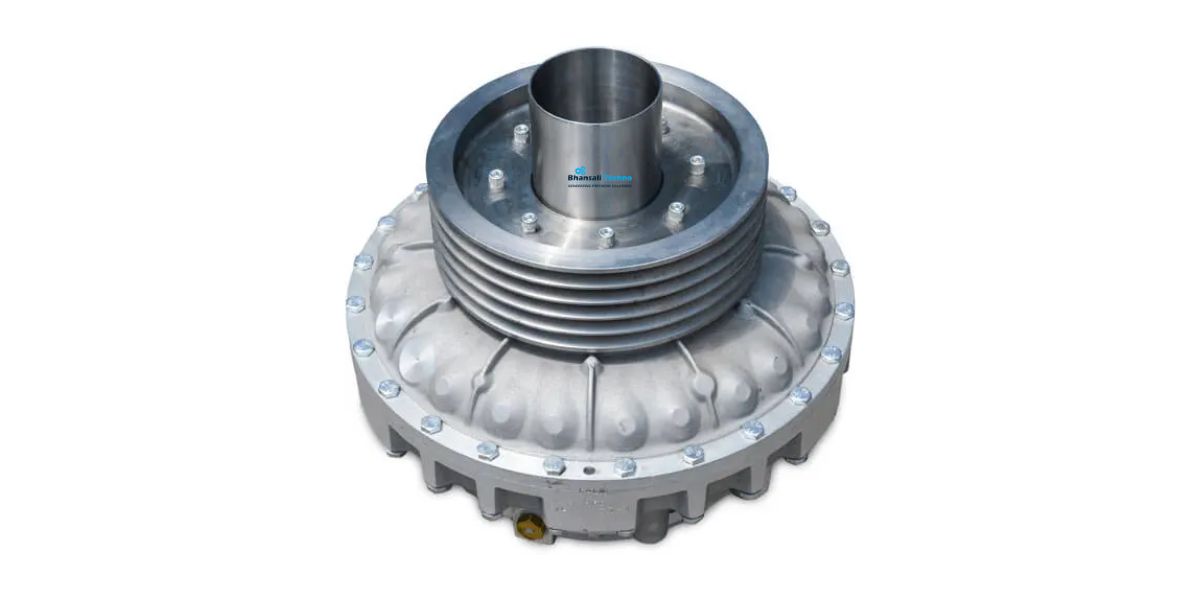
5. Oldham Coupling
Commonly found in filling and capping machines, an Oldham coupling has two flangs connected with a middle plate and the flanges with a groove and tongue arrangement. Oldham couplings are most suitable for machines with zero backlash and parallel misalignment.
Benefits Of Using Oldham Coupling
- It is ideal for zero backlash operations.
- Easy to remove without needing tools.
- It can withstand high temperatures.
- It comes with a fail-safe design.
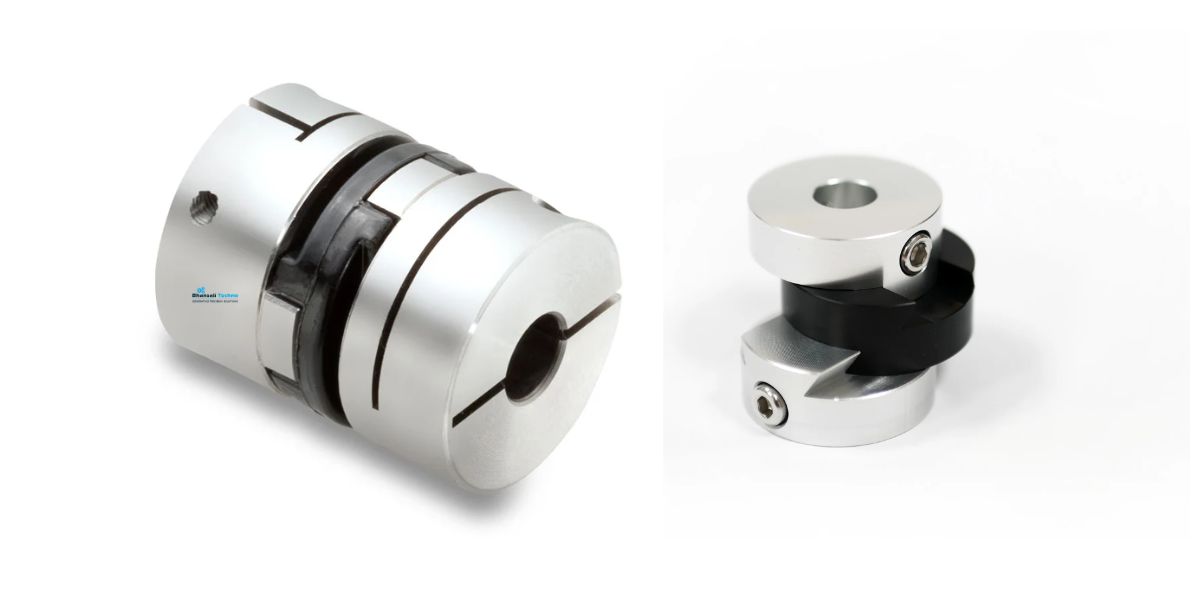
6. Gear Coupling
Gear couplings are the types of flange coupling that are suitable for heavy-duty mechanical systems. In a gear coupling, the two shafts are joined at the end to exchange movements. The primary function of these types of couplings is to efficiently connect two pieces of spinning machinery that allow movement and misalignment.
Benefits Of Using Gear Coupling
- It helps increase the efficiency of machines.
- Can easily tolerate misalignments between shafts.
- Offers high torque at high speed.
- The installation process is easy and flexible.
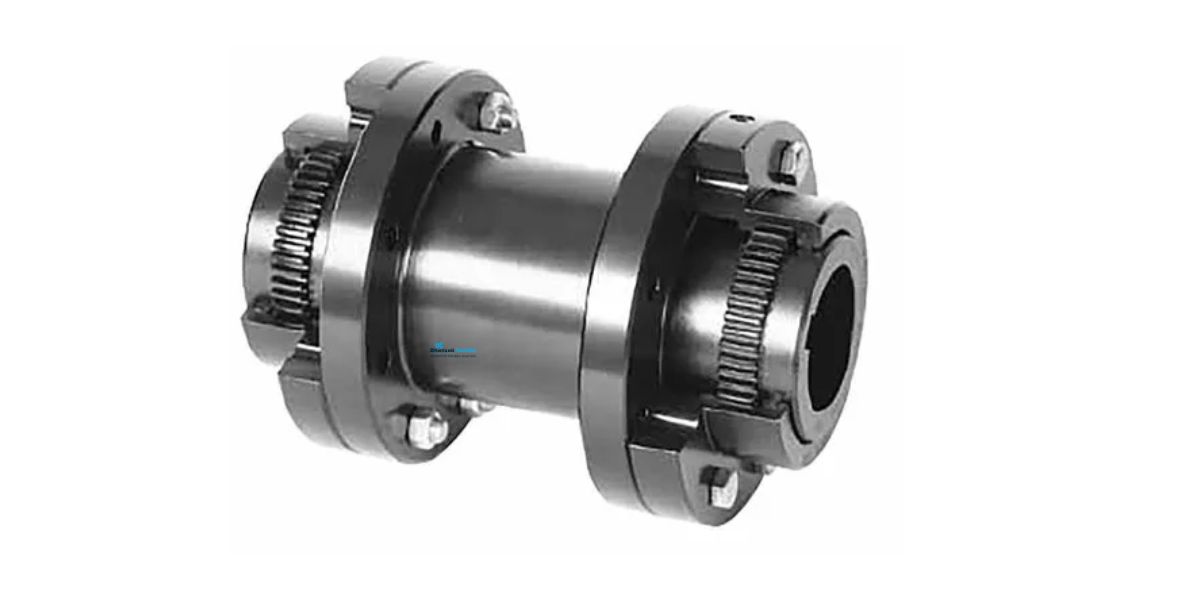
7. Universal Coupling
A coupling is only used when the shafts are at different angles; universal couplings are common in heavy vehicles and offer a flexible connection between two rigid shafts. With its universal design, these couplings provide transmission efficiency and increase the reliability of mechanical systems.
Benefits Of Using Universal Coupling
- They contribute to smooth operations and durability.
- Have high tolerance and corrosion resistance.
- It comes with a simple design that is easy to install.
- Are easy to maintain and minimize wear and tear.
- It helps reduce maintenance costs and downtime.
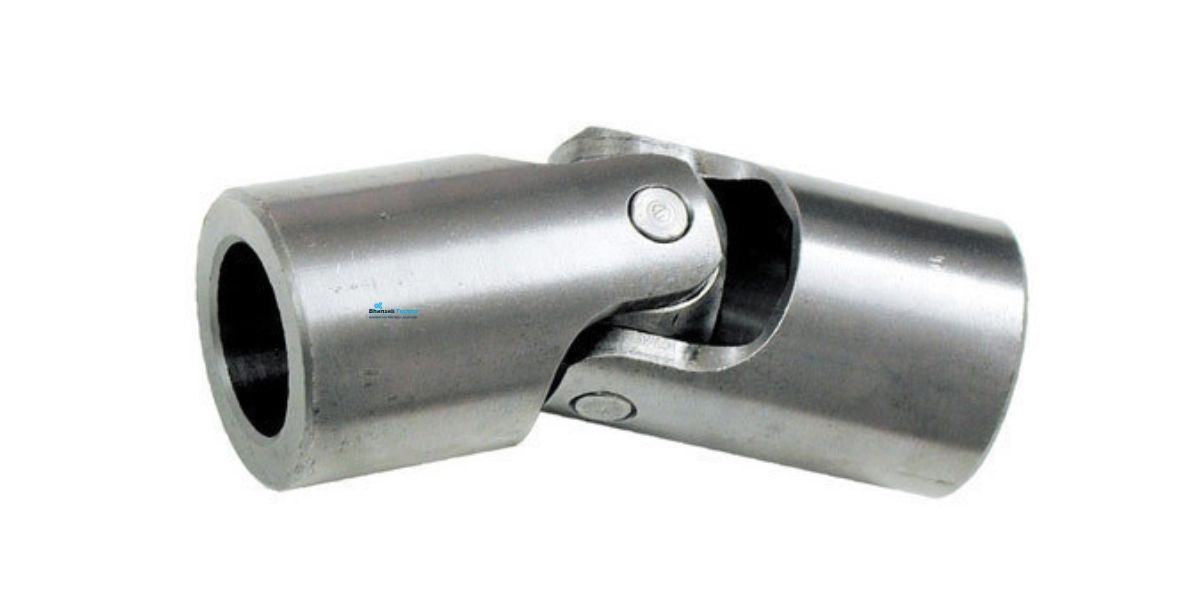
Parameters In Choosing The Type Of Coupling
Couplings are an integral component of motion control and power transmission systems ensuring flexibility, reliability, and longevity of mechanical systems. Choosing the correct coupling will provide incredible advantages when fixed properly.
Bhansali Techno Components is one of those leading companies focused on manufacturing precision components that meet the highest quality standards. Any industry or business seeking good quality couplings must choose specialists like Bhansali Techno Components and never worry about disruptions in the performance of application systems.
